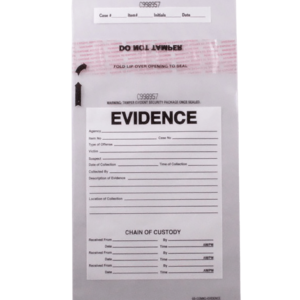Effective inmate property management is a crucial part of daily operations in correctional facilities. From the moment an individual is booked until their eventual release, ensuring the safe handling of their personal belongings is essential for maintaining order, preventing theft or disputes, and upholding institutional standards. One of the most reliable solutions in this system is the use of secure storage bags, particularly tamper evident bags and prisoner property bags.
Why Inmate Property Management Matters
Inmates arrive at correctional institutions with a wide variety of personal items—everything from wallets and jewelry to phones, clothing, or prescription medications. Correctional staff are responsible for logging, storing, and securing these belongings until the inmate is released or transferred. Any loss or tampering can lead to legal issues, distrust, and logistical complications. That’s why correctional facilities invest in tools and procedures that ensure chain of custody, accountability, and protection from unauthorized access.
The Role of Tamper Evident Bags
Tamper evident bags are designed to show visible signs if someone has attempted to open them. These bags often include features such as sequential barcodes, writable surfaces, and security seals that irreversibly change when tampered with. This level of protection is vital in environments like jails or prisons where disputes over lost or stolen property can escalate quickly.
These bags not only protect property but also help establish a clear chain of custody. Chain of custody refers to the chronological documentation that records the sequence of custody, control, and transfer of evidence. The same principle applies to prisoner property, especially in high-security facilities where accountability is paramount.
Benefits of Prisoner Property Bags
Specifically designed prisoner property bags are made from durable materials such as clear polyethylene or reinforced nylon. These bags are labeled with the inmate’s identification and property inventory and can include tamper-evident sealing systems. Their transparency allows for quick visual inspection, helping staff maintain safety protocols without opening each bag unnecessarily.
Some bags are reusable, while others are single-use for added security. They may also be waterproof, fire-resistant, or antimicrobial—depending on the needs of the facility. These features make prisoner property bags an efficient, cost-effective solution for inmate property control and protection.
Compliance and Trust
Using standardized tamper evident bags and prisoner property bags ensures that correctional facilities remain in compliance with local and federal regulations. Proper property handling fosters transparency, reduces litigation risk, and builds trust between the institution and inmates. In facilities where hundreds of inmates are processed regularly, even a small failure in property handling can become a big problem.
Conclusion
Managing inmate property is not just about storage—it’s about security, accountability, and respect. Tamper evident bags and prisoner property bags are indispensable tools in ensuring that an inmate’s personal items remain protected and properly documented throughout their incarceration. By integrating these secure solutions into property management systems, correctional facilities can uphold high standards of care, safety, and operational efficiency.






More Stories
How a Deportation Immigration Lawyer Protects Your Rights During Removal Proceedings
Child Support in Oklahoma City: What to Expect in 2025 Cases
Understanding Criminal Defense in Atlanta: Why Choosing the Right Attorney Matters